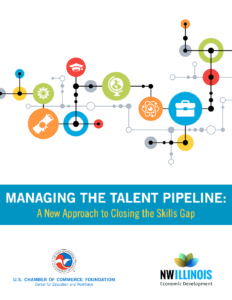America’s education and workforce systems are failing to keep pace with the economy and the new skill sets it requires. The ‘skills gap’ is the disconnect between what skills employers need and what prospective employees are prepared to do.
We have people without jobs and jobs that can’t find the right people
U.S. employers are increasingly reporting problems finding qualified workers. A poll of 500 American executives by staffing solutions company Adecco found that 92 percent of
executives believe there is a serious gap in workforce skills, and nearly 50 percent are struggling to fill jobs. In manufacturing alone, more than 75 percent of manufacturers
report a moderate-to-severe shortage of skilled workers, according to a recent study by Accenture and the Manufacturing Institute.
The skills gap is a threat to American growth and competitiveness. A survey by Chartered Global Management Accountants (CGMA) found that because of ineffective human
capital management, 43 percent of employers failed to achieve key financial targets, 40 percent had a reduced ability to innovate, and 37 percent were unable to start a major project or strategic initiative.
Employers are unlikely to return to the past and take on the risks and additional costs associated with large-scale, in-house training. They are less likely to find just-in-time talent given the inability of providers to quickly respond to workforce needs. Therefore, rather than sourcing new graduates, many employers have opted to poach employees from other companies because experience is judged as a more trustworthy proxy for talent than are newly acquired credentials, even though poaching drives up the cost of wages
within an industry.
To close the skills gap, the U.S. Chamber of Commerce Foundation (USCCF) is engaging employers and their partners across the country in developing a new demand-driven approach based on supply chain principles called Talent Pipeline Management (TPM).
Click through to read the ebook by Generis and NW Illinois Economic Development and learn more about:
- America’s Skills Gap
- Using the Principles of Supply Chain Management for Talent Pipeline Management
- The Six Talent Pipeline Management Strategies

